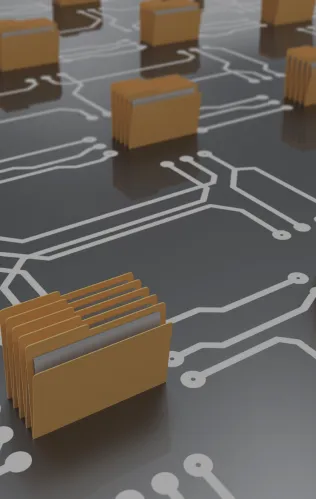If you’ve been thinking about integrating your student information system with other educational technology solutions, it’s time to take the leap! With the EdTech start-up market projected to reach $252 billion, it’s clear that digitization is becoming a crucial aspect of education.
Integrating your SIM system with other educational technology solutions can improve your overall understanding of your students, while streamlining your daily operations.
In this blog post, we’ll cover 8 benefits of integrating your SIM system with other educational technology solutions.

- Cost-effectiveness
A single, unified solution that can be integrated with multiple third-party systems is less expensive to implement, maintain and upgrade than buying a stand-alone system. Integrations also allow for cost savings by reducing duplication of effort across systems (e.g., data entry).
- Faster scaling
When you integrate your student information management system with other educational technology solutions, it’s easy to add more users and data sources. You can expand your system’s features as needed, saving you time and money, as scaling up becomes easier than scaling down before integration.
- Improved data integrity and quality
Integrated student information systems can be used to improve data integrity, quality and consistency.
Data integrity means that the data you collect is accurate and consistent with what is registered in other systems. For example, if a student has a parent record in your school’s SIS but not her own (because she hasn’t yet been assigned an ID number), then the system will make sure that those two records don’t get linked together by mistake.
Data quality refers specifically to measurements of accuracy–how often are errors made? How many students have incomplete or inaccurate demographic information? When errors occur during entry into your SIS system (or any other), it’s important that they’re corrected quickly, so they don’t cause problems later on down the line when someone tries using this data for reporting purposes or analysis.
- Centralized data management
Integrating your SIS with other systems allows you to centralize the management of data and information from different sources. In this way, you can store all of your student information in one place, which makes it easier to access and share with other systems (like LMS or HR). Moreover, you can use the same system for managing student information, reporting, analysis and even compliance reporting.
- Elimination of data duplication
Integrating your SIM system with other educational technology solutions eliminates data duplication across systems and departments, eliminating redundant workflows such as duplicated entry tasks. As an example, imagine a school district that has two different applications for collecting student demographics: one for grades 3-5 and another for grades 6-12. If you want to collect attendance data for both groups, you would have to use two separate systems-and then manually transfer the information into your SIS after it’s been entered. This process can be time-consuming and prone to errors due to human error or incomplete data sets.
By integrating these systems together via APIs (application programming interfaces), however, schools can save significant time by eliminating redundant workflows such as duplicated entry tasks within each individual application used by staff members throughout various departments within an organization like yours.
- Increased productivity
A student information management system is an essential tool for any school or district. It can be used to organize student data, track attendance and grades, manage scheduling and more, allowing you to stay organized and keep your students on track towards graduation.
But what if you could use it in conjunction with other educational technology solutions? Doing so can help your school become more efficient by increasing productivity within the office, while also providing better services for students.
- Improved student outcomes
Among the benefits of integrating your school’s student information management system with other educational technology systems is improved student outcomes. When students can get faster and more accurate information about their grades, attendance, timetables and finances–information that’s crucial to making informed decisions about their education–it helps them succeed in school and beyond.
- Greater insight into students and their needs
Student information systems provide a wealth of data that can be used to improve student outcomes. Student information systems collect, organize and present information about students, their educational history and activities (e.g., attendance records), as well as other data that can be useful for understanding their needs.
For example: If you know how many times your students have dropped classes in the past or whether they often miss school due to illness, then you can use this knowledge to plan ahead with them before it becomes an issue again. You could also look at where these patterns occur within your district or even across states/countries. For instance, if most students are missing class on Mondays but not Fridays, this might indicate a problem with transportation services provided by local school districts near the weekends. Then parents might have difficulty getting their kids to school on time because they work during those hours so they cannot drive them there themselves.ly do during weekdays.
Integrating your student information system with other educational technology solutions can make a big difference in how efficient your software is.
Such integrations allow you to connect with other systems, such as learning management systems (LMS) or assessment tools, so that all the data collected by these applications are stored in one place. This means that instead of having multiple sources for similar types of information, like grades or attendance records, all of this information lives in one place-your SIS. It also makes it easier for staff members to access the information they need quickly and efficiently, without having to spend hours searching through different systems or databases. Integrating your student information system with other educational technology solutions will save you time, reduce costs, and help ensure that every student gets the support they need to succeed.
FAQ’s
Integrating your SIS with other EdTech solutions offers cost-effectiveness, faster scaling, improved data integrity, centralized data management, elimination of data duplication, increased productivity, improved student outcomes, and greater insight into students and their needs.
Yes. Classter offers seamless integration capabilities that allow educational institutions to connect their SIS with other EdTech solutions, such as learning management systems (LMS) or assessment tools.
Yes, Classter offers resource management features that allow institutions to optimize the allocation of resources, such as classrooms, teachers, and materials. By streamlining resource allocation processes, Classter helps institutions reduce costs, improve productivity, and enhance overall efficiency.




